
Rituals. They’ve been a part of us since the beginning of time.
They are our way of structuring our relationship with ourselves, our families, our communities, and our gods.
Rituals help us memorialize events and people that are important to us. They help us express and reinforce our identity.
But how do these rituals vary across the globe? How do differently they represent the beliefs, values, and identity of societies?
Here, we’ll go over some of the strangest traditions practiced around the world. From comical to grotesque, we’ll cover them all below.
Nag Panchami, India
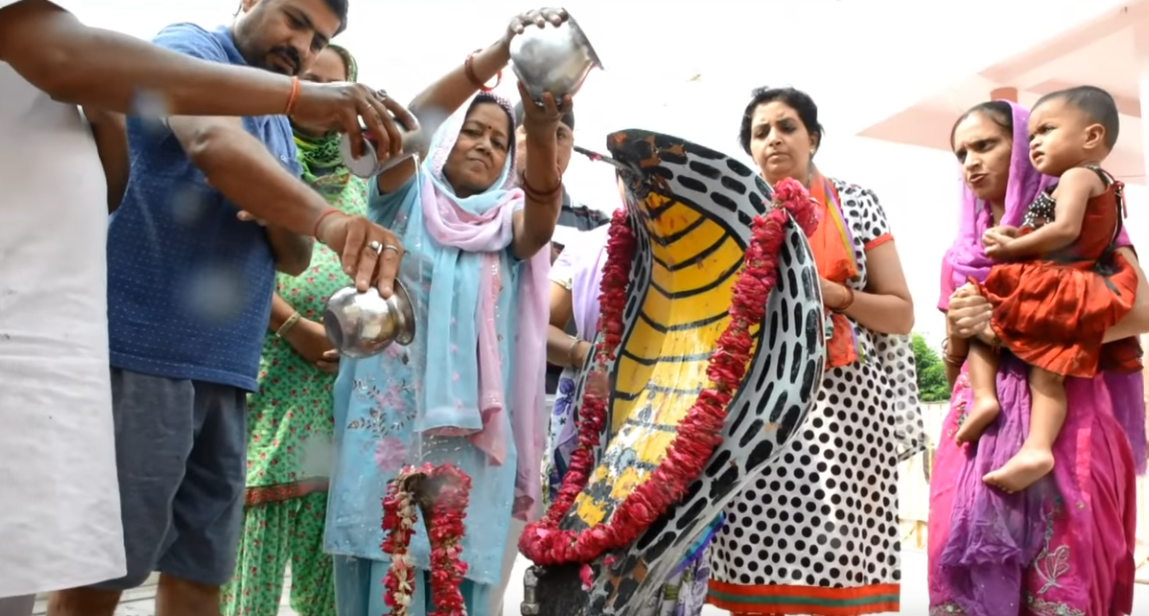
Nag Panchami is a snake festival celebrated in India.
It’s typically celebrated between the months of July and August, on the fifth day of a waxing moon phase.
On this day, people all across India worship snakes by offering prayers, flowers, milk, and other sweets.
In some regions, these offerings are believed to bring good fortune to the worshiper’s family and community. Others believe they bring protection from snakes.
The rituals of Nag Panchami vary depending on which region is celebrating it.
In some regions, the people see live snakes as extensions of God and worship them in temples.
Other areas in India worship snake idols. These regions don’t include any live snakes in their rituals.
Butt-Whipping, Czech Republic
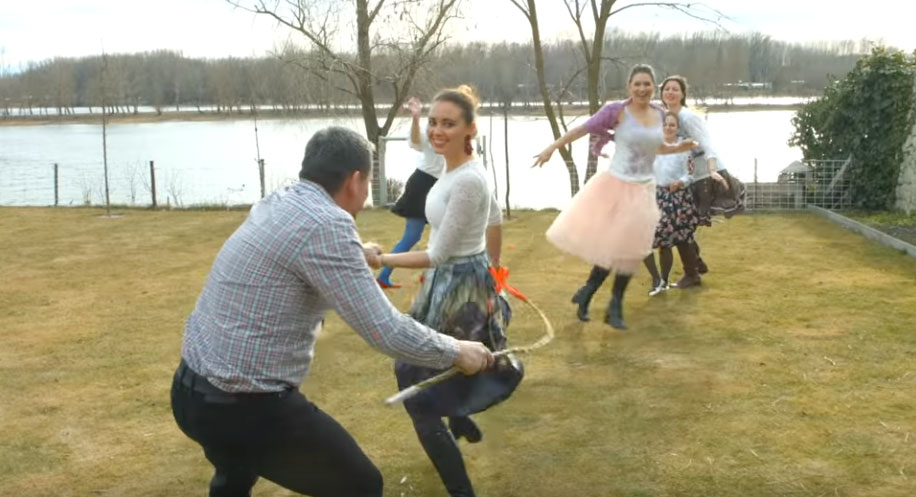
Butt-Whipping is a tradition that the Czechs practice on Easter.
The specific ritual varies depending on the region, but the overall concept remains the same.
On Easter, men visit their friends and relatives in their homes and whip the women for good luck.
The men get dressed up and sing Easter carols throughout the ritual.
When they arrive in one of the houses, they are offered treats such as candy, chocolate, eggs, or alcohol.
The men then whip or "spank" the family’s women with a special hand-made whip called a plaza for good luck.
Some women submit immediately after the men arrive, eager to get the ritual over with. Others play along and give the males a chase or hide until they are found.
Famadihana, Madagascar
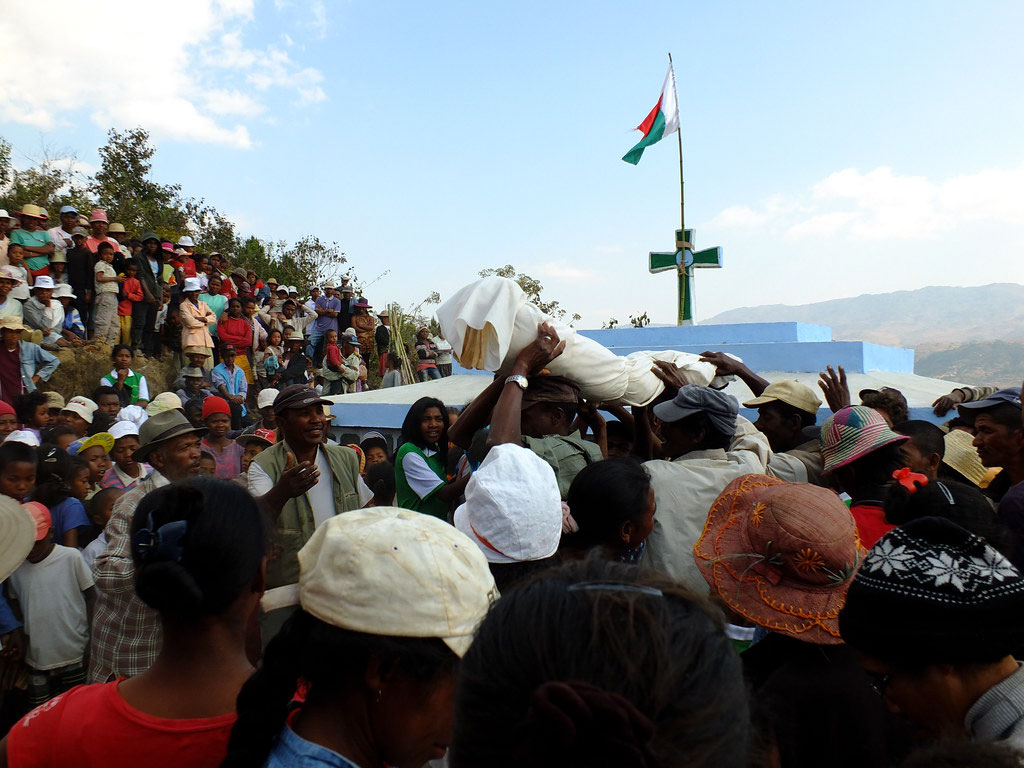
“Famadihana: Bodies for Reburial” by hobgadlng
Famadihana is a ritual that takes place in Madagascar by the Merina tribe. It means "turning of the bones."
The ritual is meant to honor and care for deceased members of a family.
It starts by exhuming deceased relatives from their ancestral crypts. The bodies are then cleaned and wrapped in fresh garments.
Once done, the family will celebrate with their ancestors by conversing and dancing with the bodies.
The ritual can last up to two days. Once over, the dead bodies are returned to the crypt and sealed inside.
This practice generally takes place every five to seven years.
Famadihana is an important part of the death and grieving process in the Merina tribe’s culture.
It’s very similar to a large family reunion that brings happiness to both the living and the dead.
The Merina people believe that their deceased ancestors act as "intermediaries" between the living and God. This ritual ensures that their ancestors are loved, cared for, and happy in the afterlife.
The ritual is also believed to bring good family fortune.
Polterabend, Germany

“File:Scherben (Polterabend).jpg” by Stefan-Xp
Polterabend is a German wedding tradition where guests break porcelain plates to honor the bride and groom.
The celebration includes lots of drinking, food, and the breaking of plates. It is notorious for how loud it can get.
The shards of glass from the broken porcelain plates are supposed to bring good luck to the couple. The more shards and the more broken plates, the more good fortune the new couple will have.
One of the main parts of the tradition is the cleaning that the bride and groom must do. The cleaning ritual is believed to unify the marriage and instill teamwork and partnership.
Traditionally, the ritual takes place the night before the wedding at the bride’s parents’ home.
Today, it’s more common for the ritual to be held in a proper location, such as a banquet hall.
It’s also more typical to do the ritual several days before the wedding. The idea is to avoid having the entire wedding party hungover on the day of the wedding.
Karnataka, India

One of the biggest fears of anyone holding a baby is dropping them. But would you drop a baby on purpose for good luck?
The ritual of Karnataka does just that. It involves dropping a baby about 30 feet from a shrine or temple. The baby is caught using a bed sheet spread out to act like a trampoline.
This practice is intended to bring good health and fortune for the rest of the babies’ lives.
Karnataka received worldwide attention in 2009 after a video of the ritual went viral.
The ritual was ordered to be stopped because it violated international children’s rights laws.
Since becoming illegal, Karnataka rituals have significantly decreased.
But many locals claim that the tradition continues but on a smaller scale.
Takanakuy, Peru
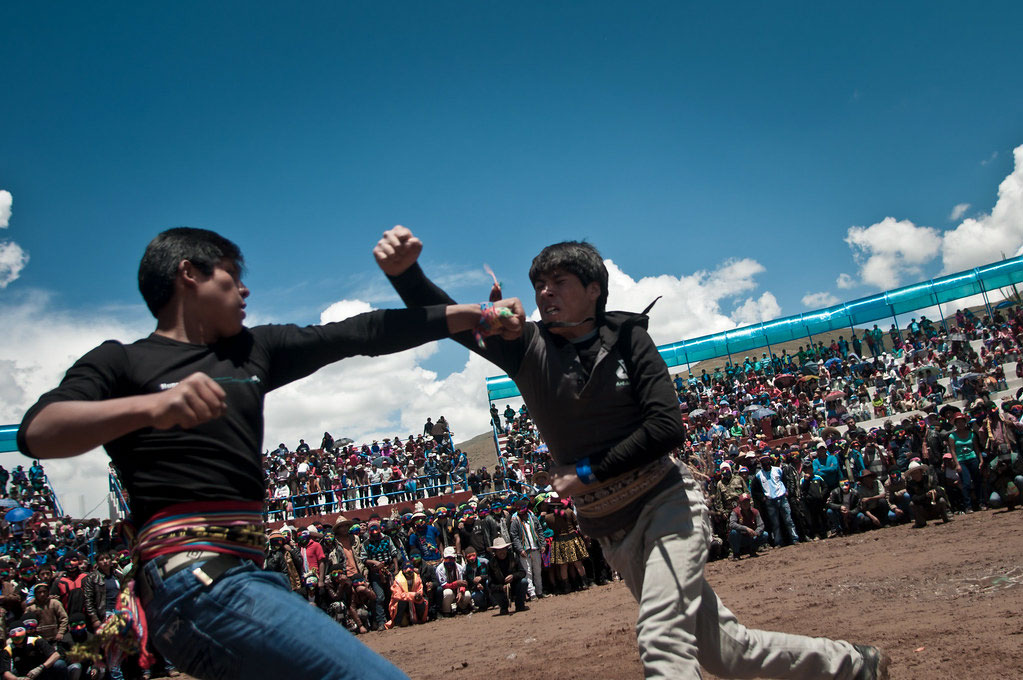
“Takanakuy • 25/12/2014 • Perú” by midianinja
They say violence never solves anything, but in Peru, maybe it does.
Takanakuy is a ritual in a small village of Peru where village members settle any disputes with a fistfight.
The annual ritual is intended to settle any conflicts of the previous year. But it’s also a time where men, especially young men, show off their strength and courage.
So how is the winner decided? Pretty simple. The first person to hit the ground is the loser.
There are referees and typically other security guards who use whips to keep the audience and fighters in order.
That said, this celebration is not just about fighting. They also involve music, dancing, and wonderful food.
Endocannibalism, South America
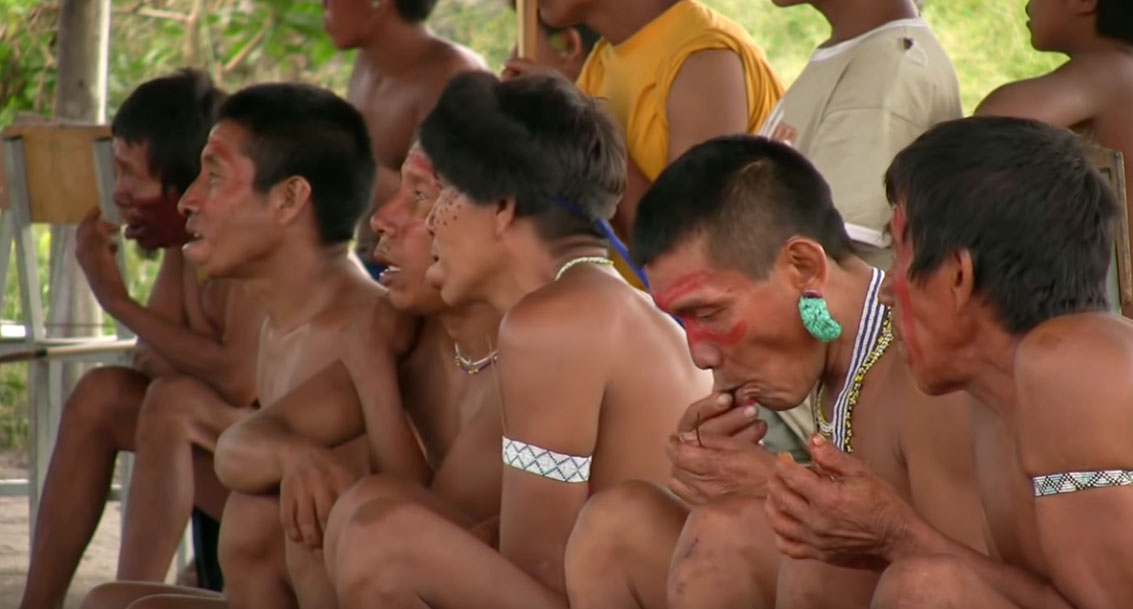
Endocannibalism may be one of the weirdest and to some grossest traditions on this list.
It’s practiced by the Yanomami is a tribe, a population that resides in the South American Amazon rainforest.
Endocannibalism is a ritual where people are eating the flesh of other members of the community after they die.
The tribe believes that the ritual will assist the dead with their transition into the spiritual realm. It’s considered spiritual and is meant to help the dead complete the circle of life.
Blackening, Scotland

Weddings are supposed to be full of beauty and elegance, but this ritual turns that on its head.
Blackening is a wedding ritual in Scotland where the friends and family members capture the married couple-to-be.
The ritual then turns into a food fight where the couple is covered with anything and everything. Rotten food, dirty, fish guts, and even honey are acceptable.
The result is pretty disgusting, and the ritual does not have any meaning other than a fun and joyous activity for a new family.
Sati, India
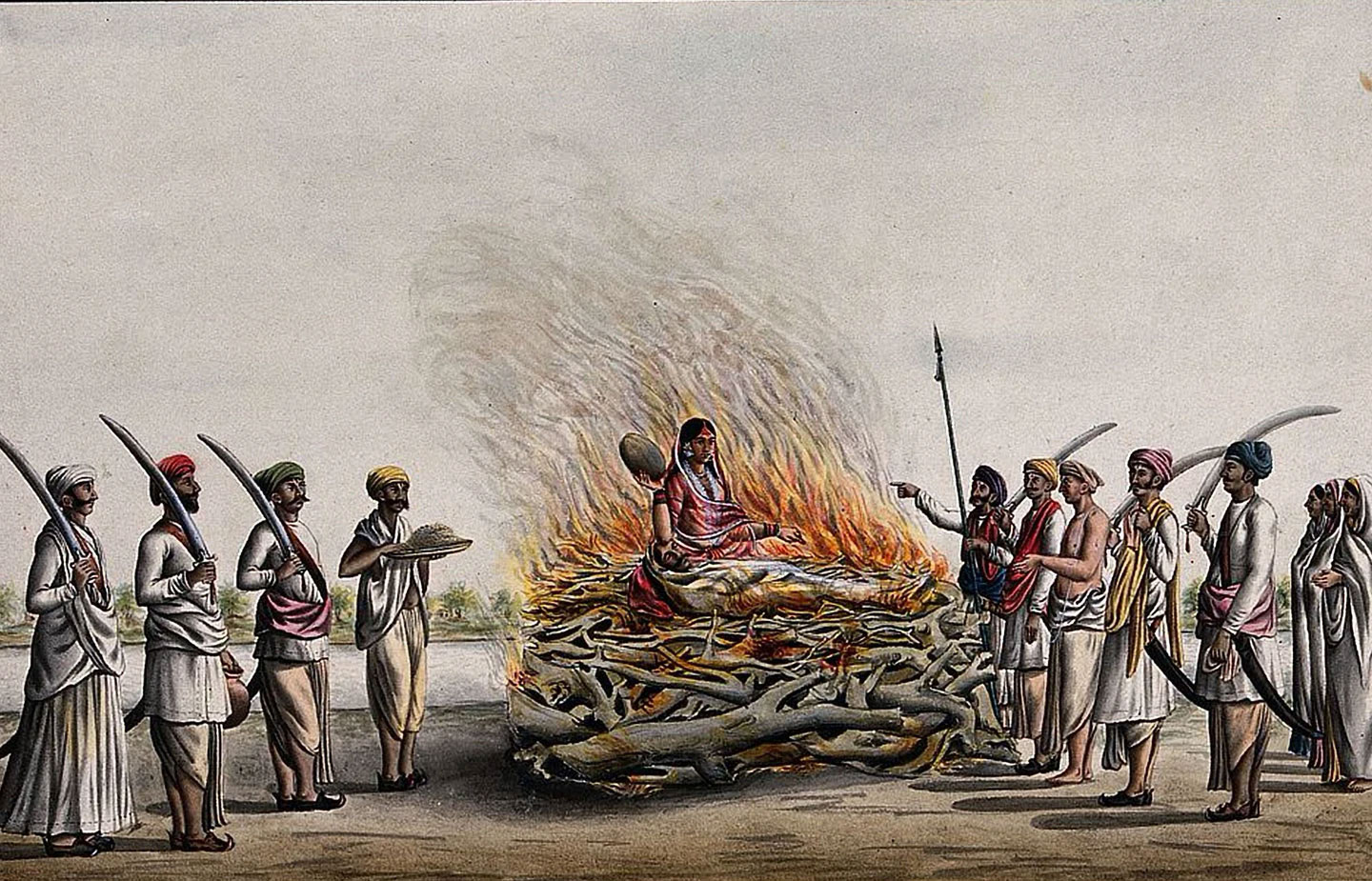
Sati is an Indian funeral ritual where the wife of a dead man burns herself to death on his corpse’s pyre.
In its earliest days, the act was voluntary and intended to be the most respectful and dutiful act a woman could do after her husband died.
Over time the ritual became mandatory. The tradition forced many women who didn’t want to die to follow Sati.
Throughout history, emperors and lords attempted to ban Sati, but there were still cases until 1987.
In the late 90’s Sati was made illegal by the Prevention of Sati Act. Anyone found guilty of violating this law is punished with death.
Burning Coal Walk, China
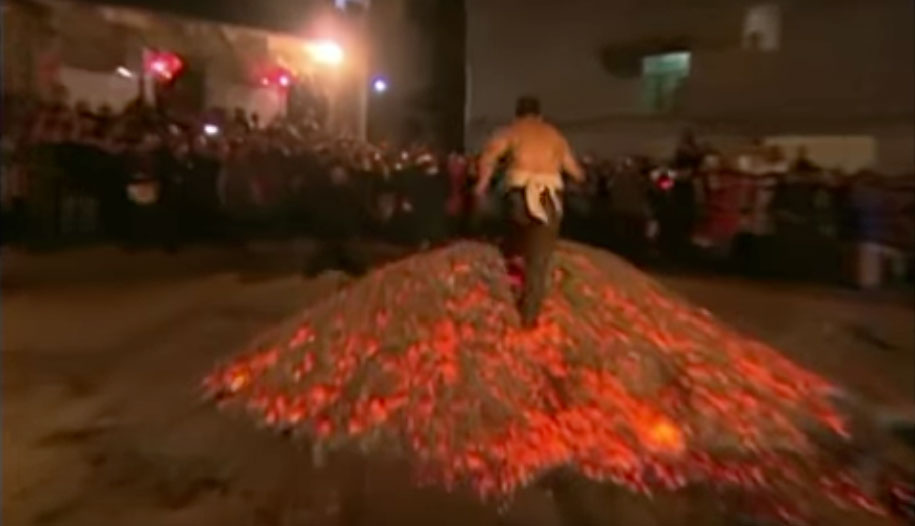
The burning coal walk is a tradition celebrated in China.
It’s intended to unite and show a father’s dedication to his wife and unborn child.
When a woman conceives, the husband carries his wife as he walks over hot coals.
This symbolic gesture ensures that the mother is not the only one who experiences pain during pregnancy.
The tradition is also supposed to help men understand the pain and effort women must endure during birth.
The Chinese believe that if the man can successfully do the walk, it will bring good luck to the family. They also think it will promote a healthy baby.
Cinnamon Birthday, Denmark
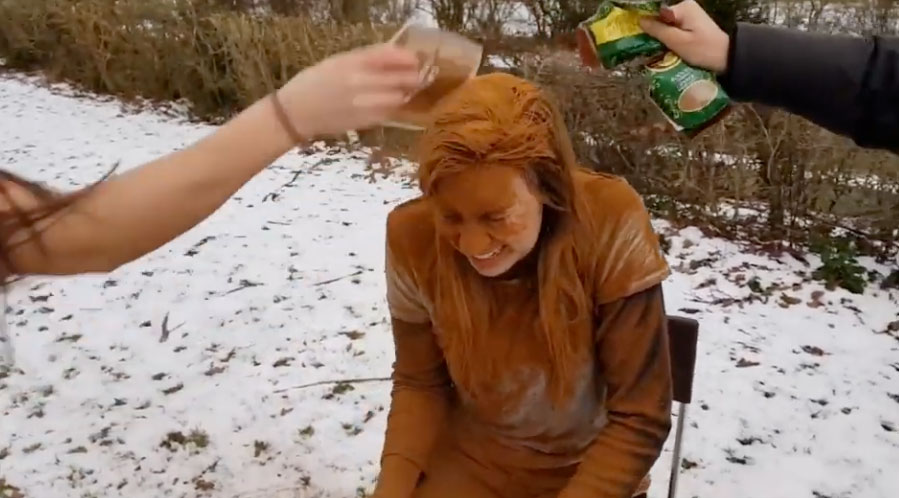
Cinnamon birthday is a ritual celebrated by the Danes.
If you’re single in Denmark on your 25th birthday, your friends and family will shower you with cinnamon.
Sometimes, they will add water and eggs to the cinnamon to make it stick and heighten the prank.
The tradition originated from a spice salesman in the 1800s. Because he traveled a lot, he wasn’t able to marry until after 25.
Today, the tradition is a silly prank that people take advantage of anytime someone turns 25 and is single.
But, the average age of people getting married in Denmark is 37 years old.
El Colacho, Spain
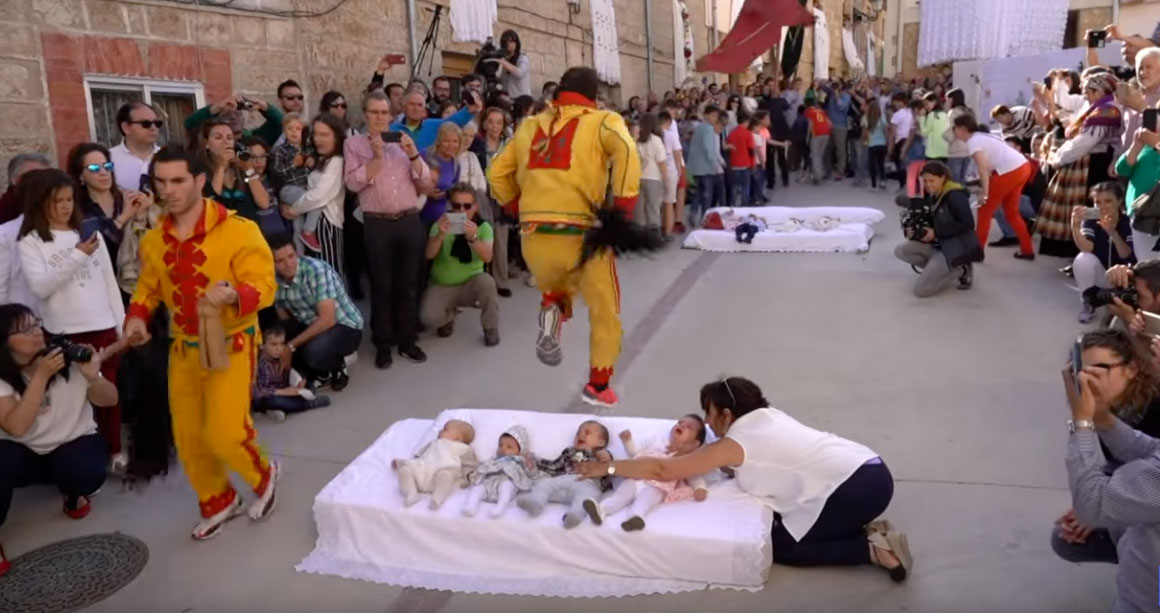
Would you let someone jump over your baby?
That’s what happens in El Colacho. A ritual celebrated in Spain.
El Colacho is a ritual that’s been practiced in Spain as far back as the 1600s.
All the baby’s born the previous year are lined up on a mattress in the street during the event.
Then, a character known as El Colacho, who represents the devil, jumps over each baby.
After, the babies are showered with rose petals and blessed by a priest.
The tradition is supposed to cleanse new-borns of the original sin.
Despite its popularity, El Colacho is heavily criticized by the Catholic Church. The church believes the practice is not in line with their values.
Although the ritual continues today, it’s done more for a celebratory act than a religious one.
Conclusion
There you have it, our top list of the strangest traditions around the globe.
Like them or not, I think we can all agree that they represent some of the best sides of humanity: loyalty, compassion, kinship, and love.

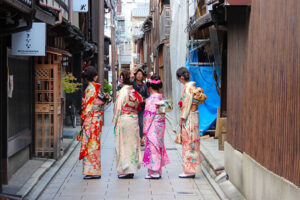


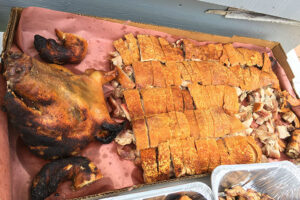





Cannibalism and antropophagie are very different. Google de meaning of each.